The game’s been humming along in stealth mode for a while, and a lot has changed. Unity’s support for hybrid 2D/3D environments has reached a point where it’s the best way to meet Ring of Glass’ gameplay needs.
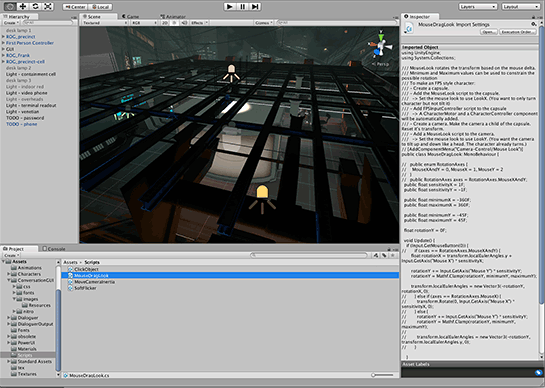
It’s pretty daunting, having to recreate our codebase in a new scripting language, but our assets are already benefiting from Unity’s high-end abilities. We’re looking forward to pushing our gameplay father than ever, and to increasing our visibility in the community.
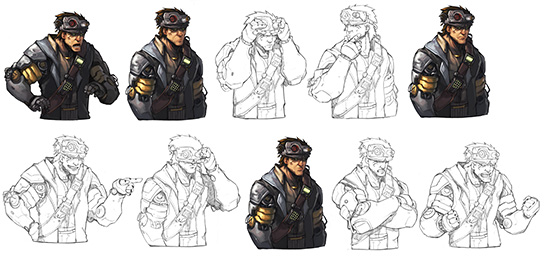
Recently, we’ve been facing the potential departure of our main 2D artist, whose availability has become limited due to his heavy workload. (A polite way of saying that we can’t afford to pay him as much as bigger companies can.) Regardless of the reason, the departure of a production artist, especially mid-way through a project with many assets already completed, is a worst-case scenario for many an indie game company.
There are certainly ways to reduce the chances of this happening—obviously, paying high rates for your artists is an easy one, and so is compressing your asset development cycle so that each artist is only needed for a short time. But the risk can never be completely eliminated. If your game’s art style is dependent on one artist, that artist can bail at any time, leaving you flailing about for a replacement.
We’re still hoping to pull our artist back on board once his workload lightens up, but for pragmatic reasons we’re also looking into alternatives, namely 3D-modeled characters. The advantage of 3D, of course, is that, once the characters are textured and rigged, there’s no dependency on any particular artist. The disadvantage is that the 3D character can lose a lot of the personality of its original 2D incarnation.
Here’s how our main character looks as a 2D cartoon:
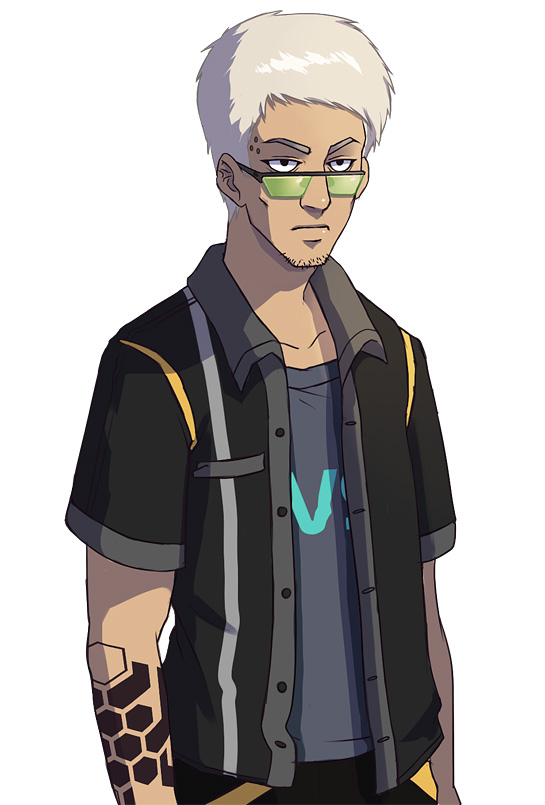
2D art by Andrea Cofrancesco
And here he is in 3D. I call this guy the “Borderlands” version:
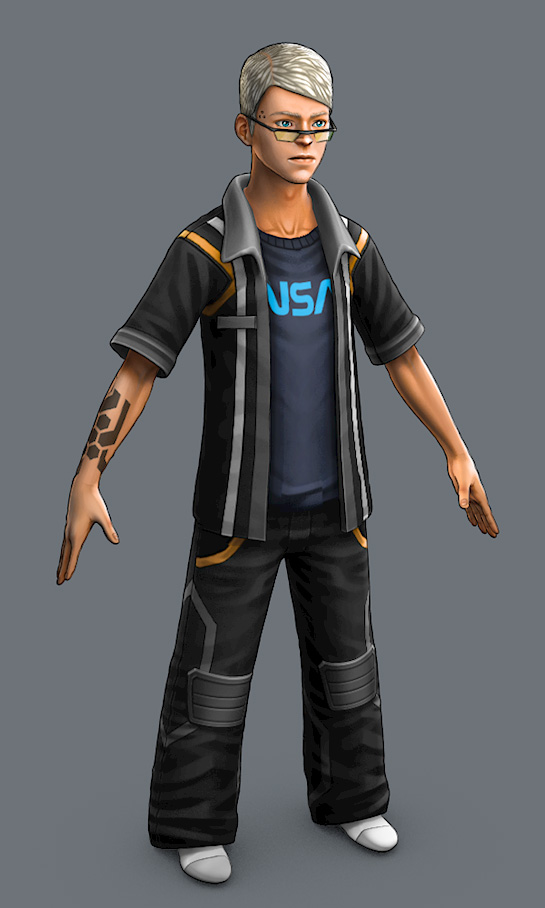
3D model by Viviane Herzog
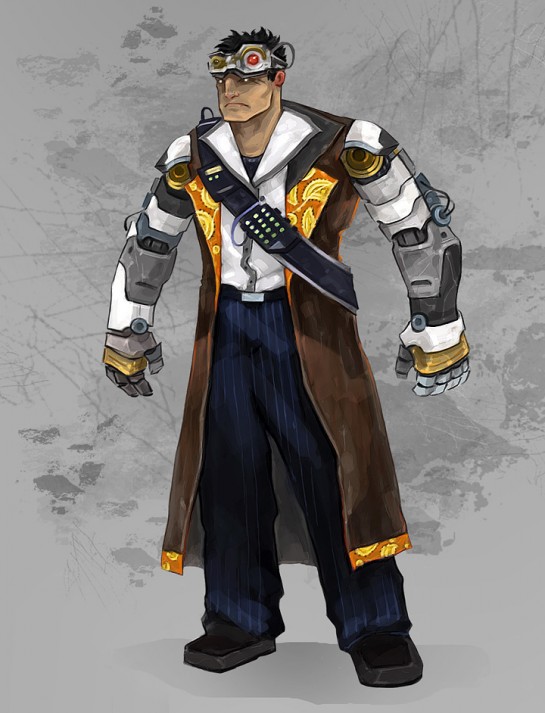
Cyrus Randust color design by David Ward
We had originally picked out a fiery, retro color palette for Cyrus Randust, cyborg-for-hire. But when resemblances to a character in a similar game were brought to our attention, it seemed like an opportunity to revisit the character. Not an overhaul, just a re-interpretation of the existing design.
We opted to give Randust more of a cold, brooding presence. A carbon coat with silvery-lavender lapels, offset by an aged leather bandolier. Lighter headgear, more bronze accents on his arms.
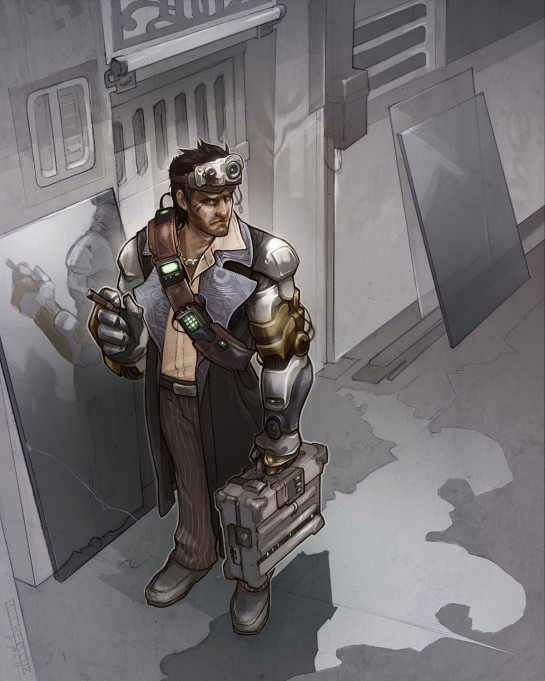
Cyrus Randust color redesign by Wylie Beckert
None of these revisions are major, but we believe they do a good job of distinguishing the character.
Three artists, three very different takes on the semi-submerged Chinatown environment.
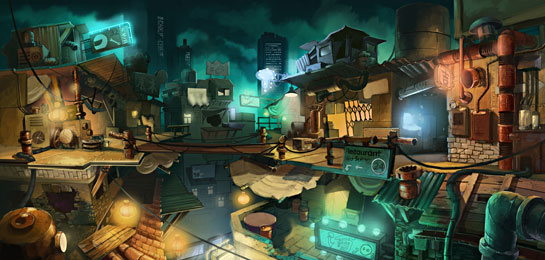
Flooded Chinatown concept by Javier Bandeira
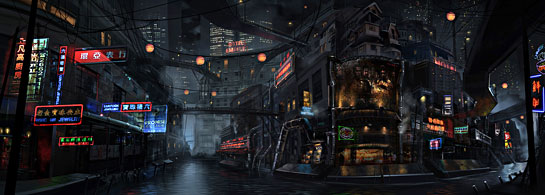
Flooded Chinatown concept by Gia Nguyen Hoang
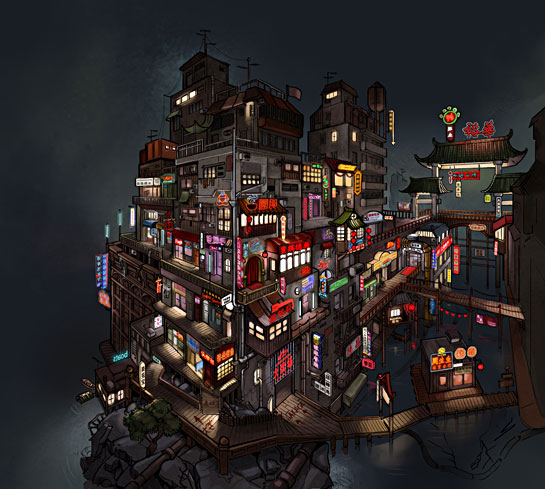
Flooded Chinatown concept by Solène Azernour
One of the chicken-and-egg problems we’ve been running into when designing environment layouts has been the intersection of art and game mechanics. The backgrounds in a point-and-click adventure game aren’t just there to establish where a conversation is taking place. They support most of the player interactivity in the game, which is what often leads to this tricky negotiation between what an environment should look like and what it should do.
On the visual side of the design process, it’s vital that each backdrop convey the visual themes and implied backstory of the game’s premise. The only way in which players are going to learn about the world in this type of game is through dialog and through background paintings. But on the gameplay side, all sorts of event-driven mechanics need to be taken into consideration. How many entrances are there? Are any other locations visible from this one? Are there any hidden objects, and if so, what’s obscuring them? Are there puzzles later in the game that need foreshadowing early on?
It’s hard to get into specifics without spoiling the game’s storyline, but a few examples spring to mind:
- Bars on the jail cell had to be replaced with polycarbonate glass. It’s a bit of a sci-fi cliché (might as well go all the way, and put all the guards in jumpsuits), but obviously we can’t have a bunch of vertical bars obscuring the clickable items in the room.
- The back of the cell, which was originally just a regular wall, was cut away to reveal a hallway with an equipment room that becomes important later on.
- A palm-scanner and terminal status panel were added at the end of the hallway, to facilitate some early-game conversations about the police server room, which is never directly shown in the game.
It’s a delicate balance to strike. On the one hand, our reliance on rough 3D mockups of the levels allows us to test these changes in context before commissioning final-quality artwork. On the other hand, it wedges an awkward (and lengthy) middle stage in between the visual concepts and the final designs. That said, it’s the best compromise we’ve been able to come up with so far.
The Nexus is our name for the fictional proto-internet within the Ring of Glass universe—a loosely connected mosaic of public and private networks. I’ve been mapping the nodes that the player will need to access to progress through the first chapter.
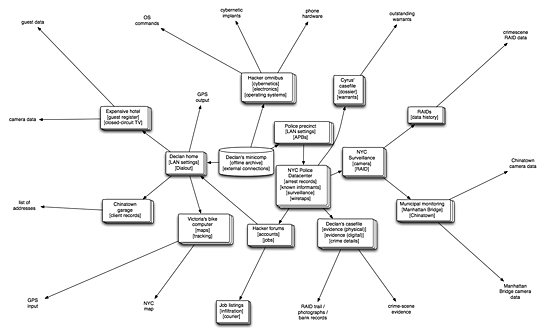
The Nexus, chapter 1
Sometimes it seems like the format of our game design documents changes as often as the documents themselves. To accommodate the quirky hierarchies and nested cross-referencing we need for asset management, we’re constantly switching between Google Docs, HTML, OmniGraffle, WikiMedia and even Celtx. It’s a moving target—since we started development, I’ve synchronized visual designs using MobileMe, written a PHP parsing tool to break a screenplay into tagged chunks of dialog, and cobbled together a dialog prototype out of jQuery and some unfinished concept art.
If we ever come up with an artful way of solving this problem, we’ll probably release it as a tool for future game developers. There’s clearly a need.









